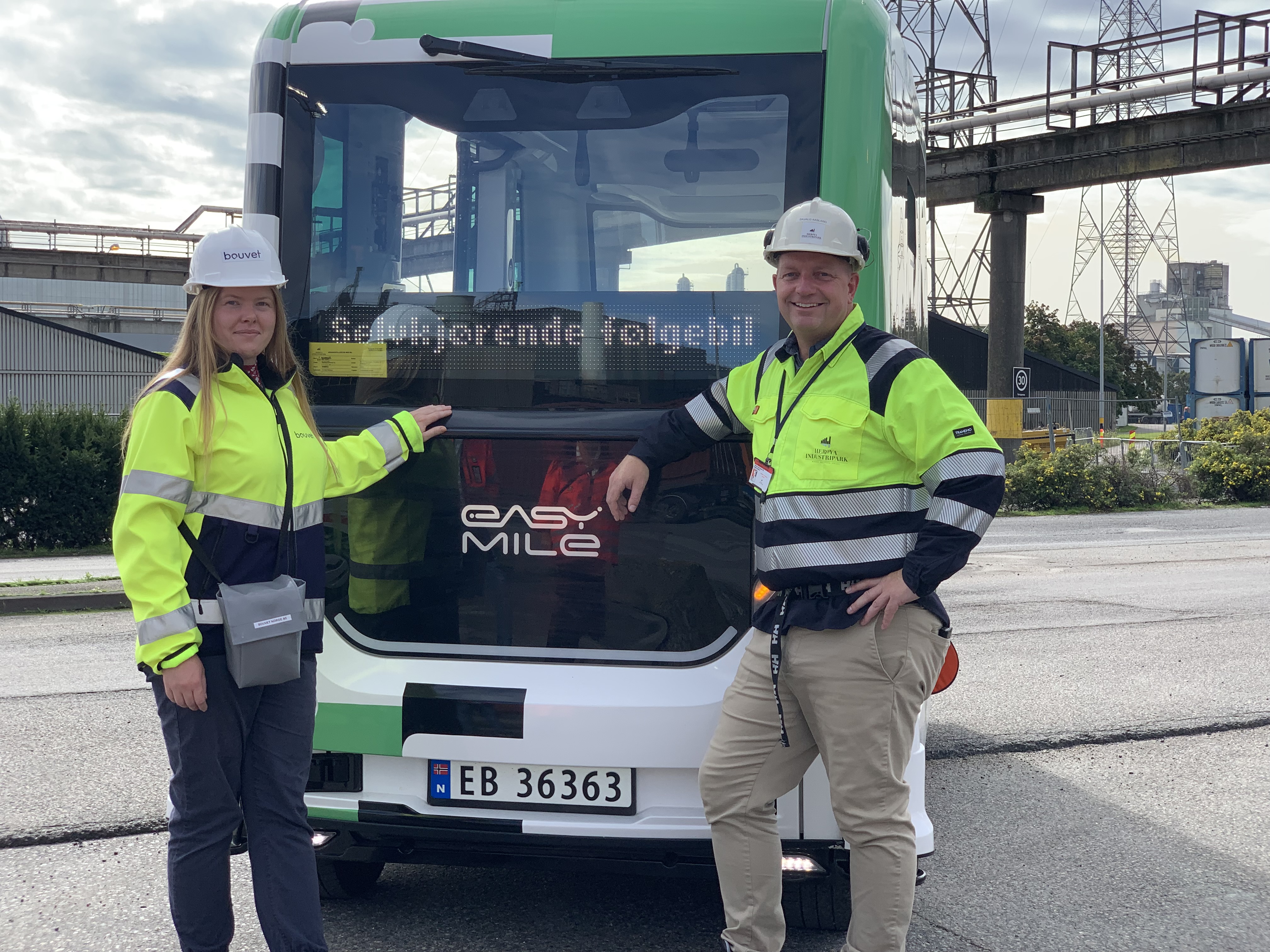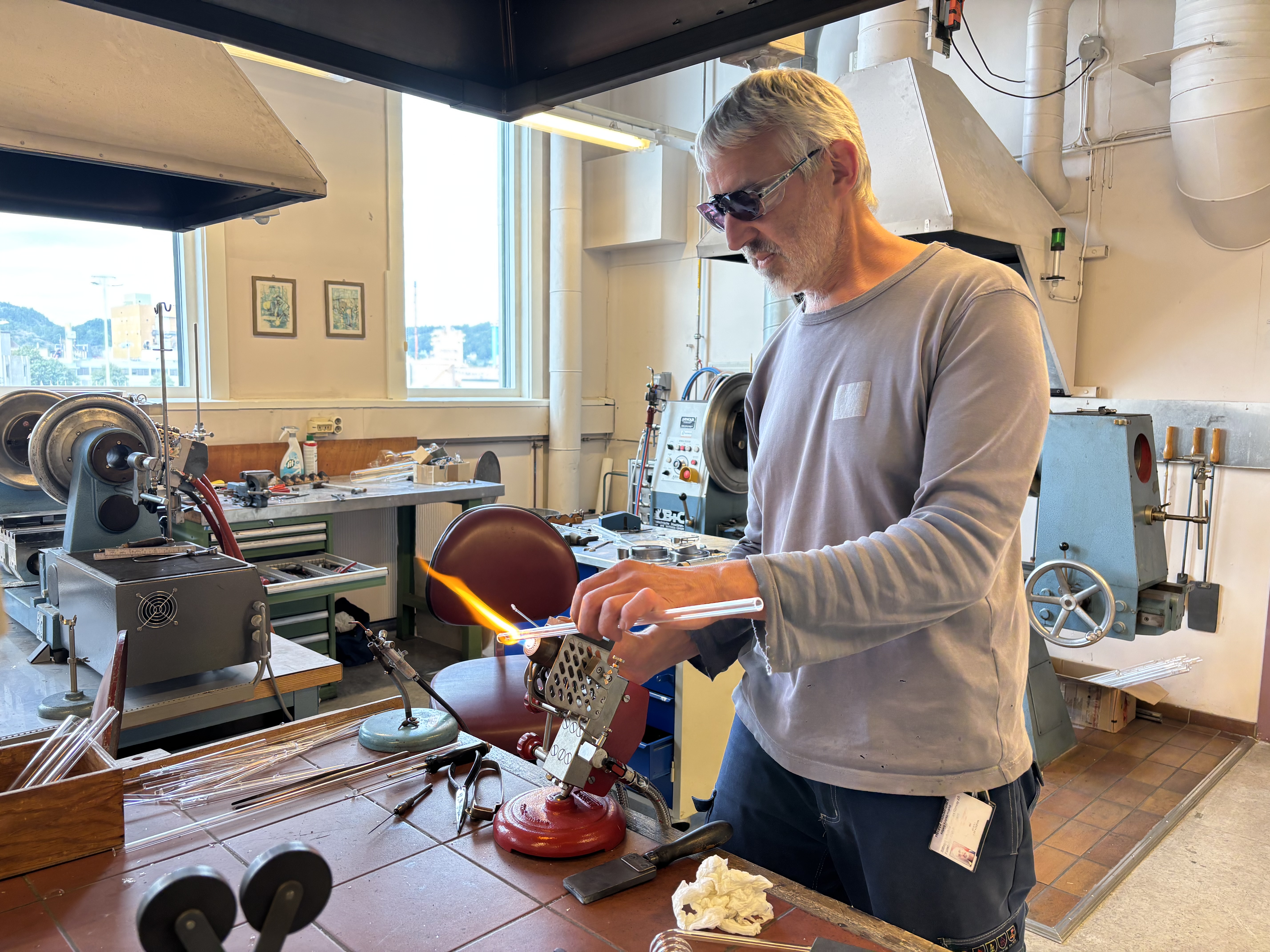Herøya Industripark AS is a participant in the EU project ORCHESTRA2020 ID953618, where they offer a test area - a so-called 'Living Lab' for testing robotic vehicles.
Testing in a private road network
The project is a future study that looks at situations where people or goods change modality, meaning, for example, that cargo transportation is either transferred to another mode of transportation or enters an area where other authorities or actors govern the ground.
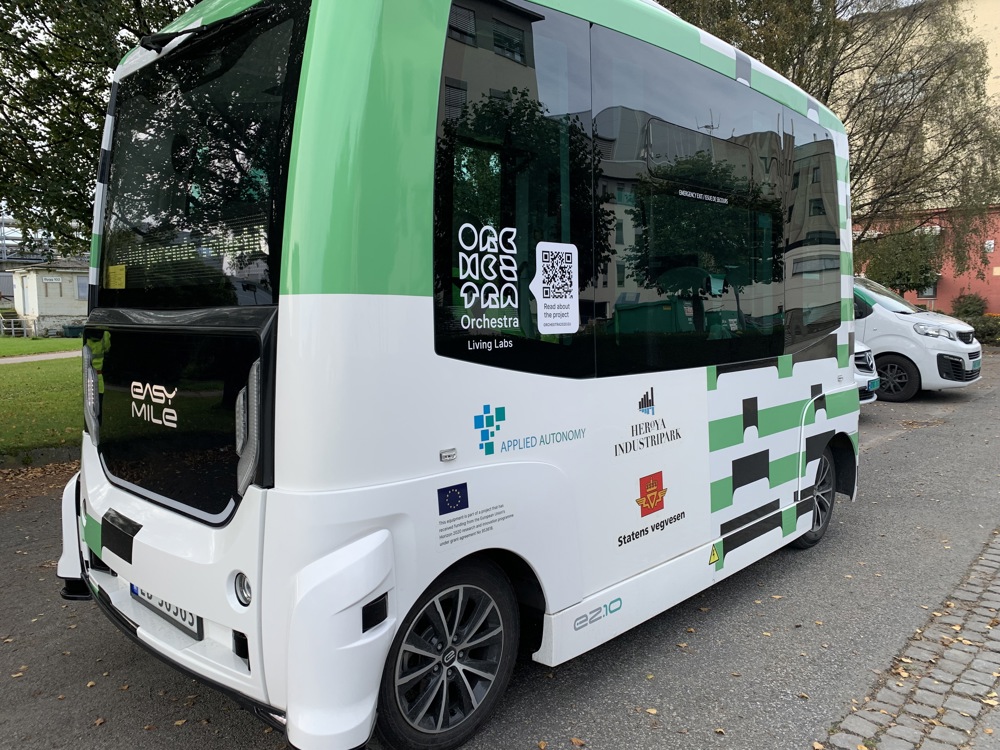
"At Herøya, we have a private road network, and this has slightly different rules than the public roads. For example, incoming lorries whose drivers do not have safety training for Herøya must follow a convoy vehicle that follows the correct route to their final destination in the industrial park. This, among other things, makes the area a well-suited test arena for the ORCHESTRA project," says Skjalg Aasland, director of business development and projects at Herøya Industripark AS.
A solution for the future
The test area for the self-driving bus is called a "Living Lab."
"In the coming period, the project will test a self-driving convoy vehicle as an alternative to having personnel at Entrance 1 manually guide incoming lorries to their final destination," says Ida Marie Norin, project leader for the Living Lab in the project at Herøya.
"The idea is that this can happen automatically in the future, so registered lorries can arrive and be guided to their destination even outside Entrance 1's opening hours."
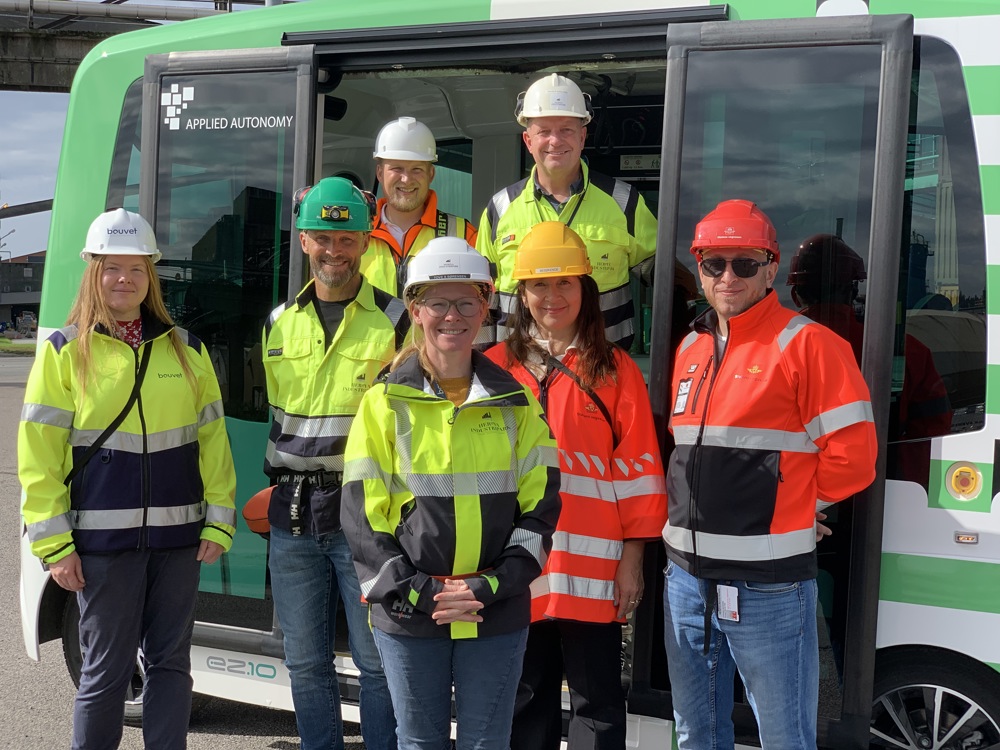
Progamming and training
This autumn, a self-driving minibus of the EZ10 Gen3 type from the French company EasyMile will drive around the industrial park. The bus is already in place and can be seen on the roads.
August is now being used for route programming, installation of temporary information signs, and training of safety operators. The programming is carried out by the company Applied Autonomy from Kongsberg. Jonny Haugen at Applied Autonomy, will be the operator in the minibus. He has received training from the vehicle manufacturer to program the vehicle and train others to be operators on board. After training, there is an exam before they are approved.
"The choice to use the EZ10 was based on availability and the fact that it can be used effectively as a convoy vehicle," says Jonny Haugen.
Operator required by law
"Even though the bus is self-driving, we are legally required to have a trained operator on board at all times who can assist the automation where it falls short. This is because we are in the testing phase, and the computer hasn't learned everything yet. The bus obediently follows a programmed driving route on the road," says Haugen.
"The vehicle doesn't have a steering wheel and pedals like a regular vehicle, and it lacks the capability for automatic avasive maneuvers or reverse. If the bus needs to deviate from its programmed route, the operator must assist the computer using a remote control inside the bus. Taking control may require some time," Haugen explains.
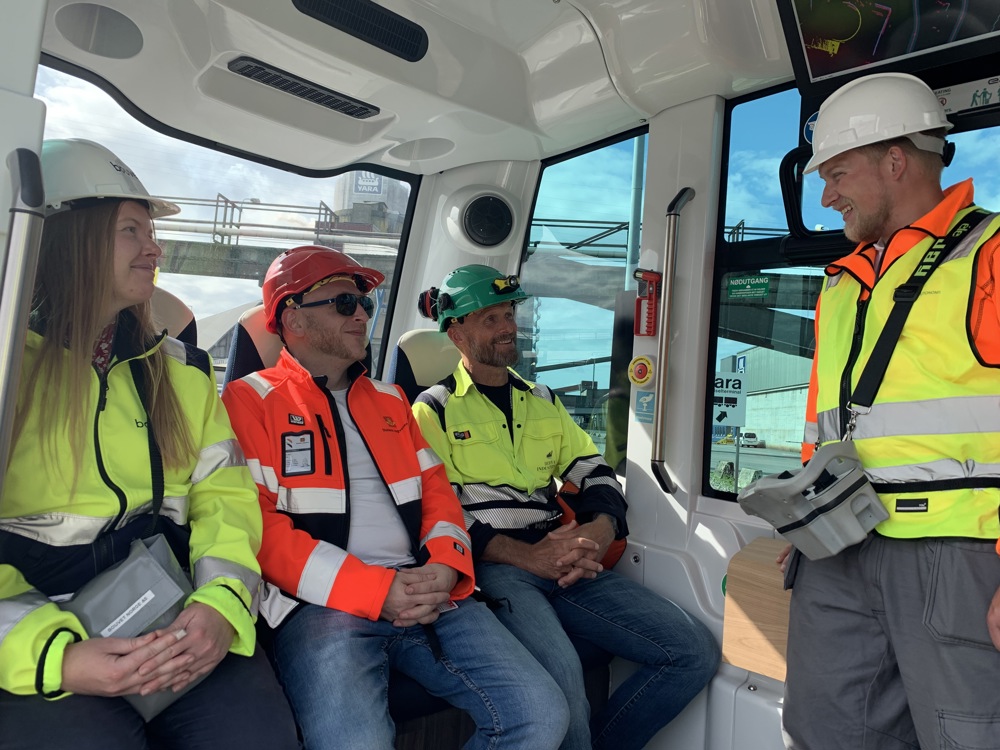
Like all other machines, the bus also has emergency stop buttons if needed. Employees from HIP, the Norwegian Public Roads Administration (Statens Vegvesen), and Bouvet will serve as operators during the testing period.
In addition to the real-world test, simulations will be used to examine how the vehicle operates in very specific situations, such as challenging driving conditions or accidents.
Opportunities from the EU project
Herøya Industripark AS aims to become an autonomous industrial park, and this test is part of a series of several autonomy projects at Herøya.
"Participating in ORCHESTRA2020 gives us the opportunity to test new digital infrastructure in our traffic system, " says Skjalg Aasland.
"We already have a solid foundation with good infrastructure for power, cooling water, roads, and the necessary expertise. Now we are taking the next step by testing digital solutions that we believe will be important for the future and an improvement in the competitiveness of businesses. In the coming period, we will conduct more tests at Herøya and also implement mature and commercially sustainable autonomous solutions.
More information about the project
Read more about the EU's ORCHESTRA project, project ID953618, the EU's ambitious €5 million initiative with the goal of realizing the future's smart/digital and green intermodal transport solutions.

